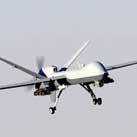Has the Time Come to Replace Manned Combat Aircraft With Armed Unmanned Aerial Vehicles?
A quantum jump in the operational role of UAVs can be expected only with a breakthrough in Artificial Intelligence. Until that happens, their will increase gradually to reach about 50 per cent of combat operations over the next three decades.
- Kishore Kumar Khera
- August 16, 2017









